

18 14 23 29 The Loyalty Gap: The Difference Between Repeat Customers And Loyal Customers - Shep Hyken, Shepard Presentations Be Relentless In Serving Your Customers - John Tschohl, Service Quality Institute How Embracing DE&I Improves Customer Journey - Kelly Byrom, Vertafore Do Your March Madness Bracket Picks Play Like Sharks? - Walter Bond, Former NBA Player and Author MARCH 2023 • Vol.22 • No.03 REIGNITE YouR CuSToMER ExPERIENCE WITH THE 5 LANGuAGES oF LovE Learn to identify customers’ language - Christopher Roberts, Founder, Engaged Strategy Pty Ltd. (ISSN 2564-2057)
- Christopher Roberts, Founder, Engaged Strategy Pty Ltd.
10 5 Essential Steps For Company Presidents To Navigate A Crisis Successfully
26 Helping Women To Close The Influence Gap Getting your voice heard as a female leader
- Carla Miller, Women's Leadership Coach, Impact Consulting Ltd.
- Shiela Mie Legaspi, President, Cyberbacker
16 Four Ways To Improve Decision-Making Even When You’re Stressed
Conquering your stress
- Dr. Jim Loehr, Co-Founder, Human Performance Institute, and Dr. Sheila Ohlsson Walker, Scientist, Institute for Applied Research in Youth, Tufts University
20 Unpacking The Monday Blues: Motivation And Productivity At Work
Understanding how different days impact productivity and emotions of employees
- Nina Paczka, Advisor and job search expert, Zety
32 The Role Of Human Resources In Responsible Lead Generation HR professionals play a key role in keeping companies compliant while generating leads

- Jamal English, CEO and Co-Founder, EDM Lead Network

Articles
It is important to have a crisis management plan prepared in advance
Your Customer Experience With The 5 Languages of
language
Reignite
Love Learn to identify customers’
07
INDE x HCM Sales, Marketing & Alliance Excellence
2023 Vol.22 No.03 ( ISSN 2564-2057)
On the Cover
MARCH
The Loyalty Gap: The Difference Between Repeat Customers And Loyal Customers

Understanding the reasons why customers might return that have nothing to do with being loyal
- Shep Hyken, Chief Amazement Officer, Shepard Presentations
Be Relentless In Serving Your Customers
The keys to great customer service are in the hands of your frontline employees


 - John Tschohl, Founder and President, Service Quality Institute
- John Tschohl, Founder and President, Service Quality Institute
How Embracing DE&I Improves Customer Journey
Inclusive design benefits your customer, and ultimately your brand
- Kelly Byrom, VP, Platform & Experience Design, Vertafore
Top Picks 14 18 23 29
Do Your March Madness Bracket Picks Play Like Sharks?
Ex-NBA star explains why it's important
- Walter Bond, Former NBA Player and Author
INDEX
Attn: HR Solution Providers!
Research
HR.com makes HR Professionals smarter and we are sure your solutions do as well.
That being said, we understand how hard it is to market in the Human Capital space, get the attention of your target audience and show HR departments that you are a valuable resource. So, how do you overcome this hurdle?
Easy. Work with HR.com.
With over 19 years experience working with HR solution providers, we give over 1,200,000 HR professionals access to the tools and resources they need to succeed. We work side-by-side with HR solution providers to help them generate sales leads, grow market share, build brand awareness and promote industry expertise.
Checkout our growing list of tools and resources our vendors can take advantage of to get noticed by HR professionals!
HR Marketing Institute
The HR Marketing Institute (HRMI) is the ONLY community of Marketing Professionals in the Human Capital space dedicated exclusively to the issues and needs of the marketing professionals and their businesses. This is a community of Marketing professionals who dedicate their time to marketing in the Human Capital space and who support each other to make the right decisions so that your marketing initiatives deliver the impact you need to succeed. Membership includes networking with peers, face to face summits, webcasts, research and benchmarking tools.
Webcasts and Virtual Events
Thought Leadership, Lead Generation and Educational Content
HR.com’s Webcasts and Virtual Events are more than an exercise in brand awareness. They are a comprehensive and groundbreaking way of generating tangible sales leads, while showcasing you as an industry authority to a captive audience of clients, prospects and the entire HR.com global community, giving you a greater market reach. In addition, HR.com’s one-hour webcasts provide valuable education and certification credits for today’s forward-thinking HR professionals.
Build your brand, content marketing strategies, and thought leadership with exclusive HR.com research. Choose between custom featured research or state-of-the-industry research sponsorship. With custom featured research, we work with you to develop research on the topic of your choice or align your brand with any of this year’s State of the Industry hot topics to highlight the latest HR trends. No matter which research strategy you choose, come away with your very own branded research report and infographic, establish yourself as an industry thought leader by presenting a webcast, get key insights from the opinions of highly qualified HR professionals, and maximize your ROI, and build a healthy sales funnel with over 1,000 qualified leads.
Managed Email Campaigns
Looking to expand your marketing reach? Build long-term customer loyalty? Generate high response rates? Drive website traffic? The value of HR.com’s opt-in direct email program allows you to do just that. Nurture potential buyers on a consistent basis through our managed campaign program. Deliver your message directly to HR decision makers’ inboxes. HR.com’s direct email lists are 100% optin, GDPR, CASL, and CAN-SPAM compliant and contain only the most exclusive names and companies in the human capital industry.
Online Advertising
Onsite advertising is a great way to reinforce brand and profile new products associated with a product launch. HR.com offers a variety of online advertising solutions including banner ads and premier homepage positioning making it a cost-efficient option for maximum brand exposure.
Buyer’s Guide
Be the Answer to the Questions HR Decision Makers are Asking

The HR.com’s Buyer’s Guide is where HR departments from around the world turn first when they need products and services. Put your company at the top of their list and get listed with the resource that HR professionals and decision makers trust.
Excellence Publications Interactive Targeted Learning ePublications
Aimed at Reaching Your Core Audience
HR.com’s 12 targeted and focused monthly online publications provide an invaluable collection of high-quality HR content and experts’ solutions to our members. Ten of our publications now feature themed editions that focus on specific topics. Sponsorship of research reports and webcasts aligned with the themes are also available.
For more information phone: 1.877.472.6648 | email: sales@hr.com | www.HR.com
Exclusive HR.com research
Our solutions will get you more clients, brand exposure, sales –and a marketing community too!
Editorial Purpose
Our mission is to promote personal and professional development based on constructive values, sound ethics, and timeless principles.
Excellence Publications
Debbie McGrath

CEO, HR.com - Publisher
Sue Kelley Director (Product, Marketing, and Research)
Babitha Balakrishnan and Deepa Damodaran Excellence Publications Managers and Editors
Deepak S Senior - Design and Layout
HCM Sales, Marketing & Alliance Excellence Team
Deepa Damodaran Editor

Chinnavel Design and Layout (Digital Magazine)
Vibha Kini Magazine (Online Version)
Submissions & Correspondence
Please send any correspondence, articles, letters to the editor, and requests to reprint, republish, or excerpt articles to ePubEditors@hr.com.
For customer service, or information on products and services, call 1-877-472-6648
For Advertising
Opportunities,
email: sales@hr.com
HCM Sales, Marketing & Alliance Excellence (ISSN 2564-2057)
is published monthly by HR.com Limited, 56 Malone Road, Jacksons Point, Ontario L0E 1L0
Internet Address: www.hr.com
Debbie Mcgrath Publisher, HR.com
Deepa Damodaran Editor, HCM Sales, Marketing & Alliance Excellence
Love Language: Going the Extra Mile to Serve Customers
TheFive Love Languages have revolutionized the way we express and receive love in relationships. However, did you know that these same love languages can also be applied to business relationships to create more meaningful customer experiences?
While the concept of “love” may seem too strong for some business contexts, the underlying principles that guide it are universal. These include appreciation, respect, attention, and understanding, which can be applied to customer relationships to create more meaningful experiences.
Going that extra mile to understand the unique needs of your customers and speaking to them in a language they understand, thus, will reignite their experience with your brand.
Check out Engaged Strategy Pty Ltd. Founder Christopher Roberts’ Reignite Your Customer Experience With The 5 Languages Of Love to understand how companies can build stronger relationships with customers, and ultimately increase customer loyalty.
When diversity, equity, and inclusion (DE&I) conversations come up in the corporate world, they often center on hiring
and talent retention. And those are important conversations for creating strong, thriving workplaces. However, DE&I principles are also central to inclusive design, translating to great products in general, and powerful, customer-first solutions in the world of software. Vertafore’s Kelly Byrom, in her article, How Embracing DE&I Improves Customer Journey, lists down three things product designers can take away from DE&I principles.
In The Loyalty Gap: The Difference Between Repeat Customers And Loyal Customers highlights the reasons why customers might return to a brand and that would have nothing to do with being loyal. Service Quality Institute’s John Tschohl tells us why it is important to Be Relentless In Serving Your Customers, among others featured in this edition.
We hope these will help you achieve excellence in your sales and marketing efforts.
Happy Reading!
Disclaimer: The views, information, or opinions expressed in the Excellence ePublications are solely those of the authors and do not necessarily represent those of HR.com and its employees. Under no circumstances shall HR.com or its partners or affiliates be responsible or liable for any indirect or incidental damages arising out of these opinions and content.
EDIToR’S NoTE
OR
Copyright © 2022
publication may be reproduced or transmitted in any form without written
HR.com. No part of this
permission from the publisher. Quotations must be credited.
Subscribe now for $99 / year And get this magazine delivered to your inbox every month Become a Member Today to get it FREE! SIGN UP Write to the Editor at ePubEditors@hr.com
In a world of unparalleled challenges (global pandemic, racial injustice, political rivalry, digital 4.0, emotional malaise), uncertainty reigns. Finding opportunity in this context requires harnessing uncertainty and harnessing starts with reliable, valid, timely, and useful information. The Excellence publications are a superb source of such information. The authors provide insights with impact that will guide thought and action.
Rensis Likert Professor, Ross School of Business, University of Michigan Partner, The RBL Group


Excellence publications are my ‘go-to’ resource for contemporary and actionable information to improve leadership, engagement, results, and retention. Each edition offers rich and diverse perspectives for improving the employee experience and the workplace in general.


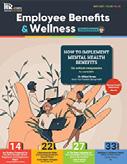





I regularly read and contribute to Leadership Excellence and Talent Management Excellence. I use many of the articles I read to augment my own presentations and I often share the articles with my clients. They are always quick, right on target for the latest issues in my field, and appreciated by my clients. If you want to stay up to date on the latest HR trends, choose a few of the different issues from the Excellence series of publications.



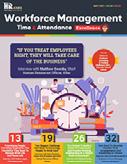

 Dave ulrich
Julie Winkle Giulioni
Author, Virtual /Live Keynote Presenter, Inc.’s Top 100 Leadership Speakers
Dr. Beverly Kaye CEO, BevKaye&Co.
Dave ulrich
Julie Winkle Giulioni
Author, Virtual /Live Keynote Presenter, Inc.’s Top 100 Leadership Speakers
Dr. Beverly Kaye CEO, BevKaye&Co.
WHY EXCELLENCE PUBLICATIONS?
We’re eager to hear your feedback on our magazines. Let us know your thoughts at ePubEditors@hr.com
Reignite Your Customer Experience With The 5 Languages of Love
Learn to identify customers’ language
By Christopher Roberts, Total Engagement Model®
TheFive Love Languages have revolutionized the way we express and receive love in relationships. However, did you know that these same love languages can also be applied to business relationships to create more meaningful customer experiences?
Going that extra mile to understand the unique needs of your customers and speak to them in a language they understand, thus, reigniting their experience with

your brand. Build stronger relationships, and ultimately increase customer loyalty via the power of the Five Languages of Love.
Applying the Five Love Languages to Build Business Relationships
While the concept of “love” may seem too strong for some business contexts, the underlying principles that guide it are universal. These include appreciation, respect, attention, and understanding, which can be
Submit Your Articles HCM Sales, Marketing & Alliance Excellence presented by HR.com March 2023 7
CovER ARTICLE
applied to customer relationships to create more meaningful experiences.
By understanding the needs of your customers and speaking to them in a language they understand, you can create a deeper connection with them and foster a sense of loyalty towards your business.
Identifying Your Customer’s Love Language

The first step towards applying the Five Love Languages to business relationships is to identify your customer’s love language. Each customer is unique and may respond differently to different types of communication. Some may be more responsive to words of affirmation, while others may be more receptive to acts of service or receiving gifts.
Understanding what resonates with which customer or cohort of customers and then speaking to them in the language they understand will help you create a more meaningful customer experience.
Words of Affirmation - Show Your Customers that You Care
Affirmation is a very powerful love language, and can be used to create a more meaningful customer experience.
This involves expressing your appreciation for your customers, thanking them for their business, and providing them with the recognition they deserve. This can be done through a variety of mediums, such as in-person interactions, emails, or even social media posts.
Using words of affirmation to show your customers that you care can help create a deeper connection with them and make them feel appreciated. This, in turn, can lead to increased loyalty and higher customer satisfaction. Additionally, it can help you stand out from your competitors and show your customers that you value them and their business.
Spending Quality Time with Your Customers
Quality time is another powerful love language that can be used to create a more meaningful customer experience. This involves spending time with your customers and getting to know them on a deeper level. This could be done through activities, such as organizing and attending customer appreciation events, inviting them to lunches or coffees, or even just having a friendly conversation with them.
Submit Your Articles HCM Sales, Marketing & Alliance Excellence presented by HR.com March 2023 8
Reignite Your Customer Experience With The 5 Languages Of Love
Spending quality time with your customers can help you build stronger relationships with them and make them feel valued. This, in turn, can lead to increased loyalty and higher customer satisfaction. Additionally, it can help you gain valuable insights into your customers’ requirements, which can be used to improve your products and services.
Acts of Service Tell Your Customers that You value Them
Acts of service involve going above and beyond to show your customers that you value them and their business. This can be practiced through activities, such as providing special discounts or offers, offering personalized services, and providing additional support or guidance.
Using acts of service to show your customers that you value them can help create a deeper connection with them and make them feel appreciated. This often results in increased loyalty and higher customer satisfaction. It is also a powerful practice to help you stand out from your competitors and show your customers that you truly care about them.
Gifting Is a Powerful Way to Demonstrate Your Appreciation
Giving your customers gifts is a powerful way to demonstrate your appreciation for their business. This may be done via thank-you cards, providing special discounts or offers, or gifting them with products or services.
Using gifts to demonstrate your appreciation for your customers helps create a deeper connection with them and makes them feel valued. It is often found to increase loyalty and result in higher customer satisfaction. Additionally, it can help you as a business stand out from your competitors and show your customers that you are willing to go the extra mile to show them your appreciation.
Physical Touch – Making the Right Connect with Your Customers
Culturally appropriate physical touch, such as handshakes or even meeting with them personally to show appreciation or resolve an issue, and using
appropriate positive language, creates a more meaningful customer experience. It also creates a deeper connection with them and makes them feel appreciated. This, in turn, can lead to increased loyalty and higher customer satisfaction.
Leveraging the Five Love Languages to Increase Customer Loyalty
Once you have identified your customer’s love language and implemented strategies to speak to them in that language, you can leverage the Five Love Languages to strengthen the connection. By leveraging the Five Love Languages to increase customer loyalty, you can create a more meaningful customer experience and build stronger relationships with your customers. This, in turn, can lead to increased customer satisfaction, higher retention rates, and higher customer lifetime value.
Creating a meaningful customer experience is an essential part of any successful business, and the Five Love Languages can help you do just that. By understanding the needs of your customers and speaking to them in the language they understand, you can create a deeper connection with them and foster a sense of loyalty and increase recommendation for your business, which will drive growth and also increase customer lifetime value.
Christopher Roberts is the Managing Director, Engaged Strategy and Creator of the Total Engagement Model® The Total Engagement Model® is the registered trademark of Engaged Marketing Pty Ltd and Christopher Roberts.
Would you like to comment?

Submit Your Articles HCM Sales, Marketing & Alliance Excellence presented by HR.com March 2023 9
Reignite Your Customer Experience With The 5 Languages Of Love
5 Essential Steps For Company Presidents To Navigate A Crisis Successfully
It is important to have a crisis management plan prepared in advance
By Shiela Mie Legaspi, Cyberbacker
Whencompanies face a crisis, the president of the organization has a vital responsibility to mitigate the damage and steer the team through it successfully. This involves skilled communication, expert management, and a willingness to embrace change.

No matter what the cause of the crisis — be it a natural disaster, political upheaval, or even poor customer service — it’s important to know how to
respond. Below, I explain the five steps presidents should take whenever a company crisis happens.
Tip #1: Manage Your own Mental State
By definition, crises are unexpected negative events, so it’s normal to react with dismay or other difficult emotions when you first learn what happened. As the organization’s leader, however, it is important to process these emotions effectively. Toward this end, emotionally intelligent leaders cultivate the skill of self-management.
Submit Your Articles HCM Sales, Marketing & Alliance Excellence presented by HR.com March 2023 10
As a Harvard Business School article explains, “A reaction tends to be automatic. The more in tune you are with your emotional intelligence, however, the easier you can make the transition from reaction to response. It’s important to remember to pause, breathe, collect yourself, and do whatever it takes to manage your emotions—whether that means taking a walk or calling a friend—so that you can more appropriately and intentionally respond to stress and adversity.”
By accepting your emotions, you will be able to process them quickly and efficiently, which will return you to a state of calm and enable you to engage in higher-order thinking. Doing this will also help you refrain from overreacting or making hasty decisions that could exacerbate the situation.
Keep in mind that leaders’ emotions are contagious and help set the mood for the whole team. By projecting calm yourself, others around you will likely stay calm as well. Simply by taking proper care of your own mental state, therefore, you can help the whole team focus on getting through the issue at hand. This approach also creates a stable, safe environment in which people feel free to bring up any concerns that arise along the way.
Tip #2: Investigate
The next step is to get the facts. You will need to determine what happened, how, and why. This will help you understand if systemic issues are at play or if this was simply an isolated incident.
To get these facts, ask for a report from the person who was in charge of the situation and anyone else involved with it. If someone did not report something earlier that they otherwise should have, this may be an indication that more is going on than meets the eye, warranting further investigation.
In addition, ask for any documentation that is related to the situation. This could include emails, customer complaints, or reports from other employees.
As the situation progresses and more information is known, you will become increasingly able to take control of the situation. While doing this, be clear about what you are doing, what you won’t do, what you need from others, and what you will do if the situation doesn’t improve.
Tip #3: Honest, Transparent Internal Communications
For best results, leaders should be honest and transparent with their internal teams. When

Submit Your Articles HCM Sales, Marketing & Alliance Excellence presented by HR.com March 2023 11
5 Essential Steps For Company Presidents To Navigate A Crisis Successfully
unforeseen obstacles arise, I involve everyone in the company, explaining what’s going on and asking for their help. Having everyone give suggestions and participate in the solution is much more effective than burdening a single division.
For instance, we once had issues with our payment gateway’s service fees. We were very, very transparent with our staff about what was going on between our bank, the company, and the payment gateway. We asked them to help us call that payment gateway to raise awareness that our company was experiencing issues and needed help. As a result, thousands of our people called the payment gateway. Just a few hours after we did that, the payment gateway deposited our funds in our account. Enlisting the help of the entire team helped us solve the problem quicker than if only the ten people in our finance division would have worked on it.
Tip #4: Stay Positive
In a crisis, skillful leaders refrain from placing blame on their subordinates. Yes, there are people involved who may have played a role in leading up to your current predicament — most likely your employees or managers. As tempting as it might be, however, try not to place blame on anyone else, even if they deserve it.
Instead, focus on what happened and how the team can learn from these mistakes moving forward so they won’t happen again. Communicate this directly with employees so they know what actions are being taken internally to prevent future errors from occurring again.
In addition, provide your employees with reassurance that you see their value as part of your team and recognize them as individuals with unique perspectives. Those who may have made mistakes will need this reassurance most.
Finally, focus your team’s attention on your vision for the company’s future. Remind your workers that, despite current problems, the enterprise’s initial motivation and current goals remain the same. Reaffirm your commitment, assure them that these challenges will be successfully overcome, and
praise them for helping each other get through the difficulties together.
Tip #5: Have a Plan
The first time your company has a crisis, you might not already have a crisis management plan in place. If so, let this be one of the major things you learn from it: always have a crisis management plan ready to go, just in case.

While crises might be unexpected, planning for them shouldn’t be. Companies that have a plan in place for dealing with crises are better able to mitigate their impact.
Every crisis management plan should create a crisis management team, the membership of which should be determined in advance. These bodies provide support in key areas such as communication, public relations, and legal counsel during a crisis situation. The key is to develop a plan and stick to it so that during times of stress, you will be more able to focus on solving problems rather than reacting to them.
By following these steps, presidents can manage company crises as gracefully and beneficially as possible. While these times will never be easy, they can be overcome, and presidents can use them to make their businesses stronger than ever.
Submit Your Articles HCM Sales, Marketing & Alliance Excellence presented by HR.com March 2023 12
Shiela-Mie Empleo Legaspi is the President of Cyberbacker, the leading provider of world-class administrative support and virtual assistant services from anywhere in the world to anyone in the world.
5 Essential Steps For Company Presidents To Navigate A Crisis Successfully
Would you like to comment?
CALLING ALL HR MARKETING GURUS - SHARE YOUR EXPERTISE WITH OTHERS!

Are you an expert in Marketing in the Human Capital space? If yes, you’re invited to submit articles for inclusion in our publication, HCM Sales, Marketing & Alliance Excellence!
This publication helps Sales and Marketing professionals in the Human Capital space learn emerging trends to help them in their business and now you can share your marketing expertise with them!

Check out our magazine here
Our readers are interested in a number of topics including:
● Marketing hacks for HR Solution Providers
● Building relationships with current and potential clients
● Tradeshow expo halls - best practices for ROI
● Branding and your online presence
● Aligning Marketing roles with your business growth strategy
● Marketing Tactics to increase ROI
● Martech Enablement
● Marketing Analytics
● How to define a “real lead” and how to count its sale value
● How to nurture stronger partnerships between marketing and sales
● Tips for working with influencers and analysts
● Market planning process
● How to build a brand
● How to win with PR
● How to use Social to drive brand recognition and sales
● Your approach to producing and disseminating meaningful thought leadership
● How marketing needs to evolve for success
Article submission deadline: 1st of each month 1
Kindly let us know if you’d be interested to feature your article in our magazine by emailing the editor at ddamodaran@hr.com. You can also review our submission guidelines by clicking here Also, if you are in marketing in the human capital space, we invite you to host a webcast for our HR Marketing Institute. For more details, please email Shelley Marsland-Beard at smarsland@hr.com
.
The Loyalty Gap: The Difference Between Repeat Customers And Loyal Customers
understanding the reasons why customers might return that have nothing to do with being loyal
By Shep Hyken, Shepard Presentations
Ina recent article, I discussed the Trust Gap, which is the difference between an organization’s belief that its customers trust them and the percentage of customers who actually do. I have covered different gap concepts in the past, and it is time to add yet another to the list, and that is the Loyalty Gap.
By the way, this is a perfect time to mention International Customer Loyalty Month, which happens every year in April. It is a time to focus some extra care and attention on your loyal customers.
So, back to the Loyalty Gap. This is the gap between the percentage of customers you think are loyal and customers who actually are loyal. If you have been following my work, you may remember that I preach there is a big difference between a repeat customer and a loyal customer. A customer that comes back again and again could be mistakenly labeled as a loyal customer. Before we can call someone a loyal customer, we must find out why they keep coming back and buying from us. And there are many reasons why customers might return that have nothing to do with being loyal. For example:
The Price Is Lowest – Customers who buy based on low price aren’t loyal to you. They are loyal to the price. The moment a competitor has a lower price, the customer disappears. And you thought they were loyal!

Submit Your Articles HCM Sales, Marketing & Alliance Excellence presented by HR.com March 2023 14
Top Pick
The Location Is More Convenient – Does the customer buy from you because you are closer than your competition? You don’t know if you don’t ask. As soon as a competitor moves into the area, if their location happens to be more convenient, the customer moves on. Again, you thought they were loyal!
The Customer Is Satisfied – This one is super important. There’s a big difference between a satisfied customer and a loyal customer. Satisfied customers are just … satisfied. The experience is good, but not great. It’s enough to get them to come back until they find another brand or organization that satisfies them just a bit more.
A loyal customer not only comes back but also spends more than a typical customer and evangelizes your brand by sharing word-of-mouth referrals. This is because there is an emotional connection. Maybe it’s the way the customer is treated. Or, maybe there is an employee the customer loves to work with. Maybe it’s the confidence that’s created when a customer interacts with the brand. There are many reasons, but they all evoke an emotional connection.
So, what’s the Loyalty Gap in your business? Do you understand your customers’ buying patterns? Do you know why they come back? In a perfect world, there

shouldn’t be a gap. But that’s not reality. There will always be customers who don’t have the emotional connection needed to drive loyalty. There’s nothing you can do but keep trying. For the rest of your repeat customers, understand why they return, then keep delivering the experience that makes them want to return.
Shep Hyken is a Customer Service and Experience Expert and the Chief Amazement Officer at Shepard Presentations. He is a New York Times bestselling author and has been inducted into the National Speakers Association Hall of Fame for lifetime achievement in the speaking profession. Shep works with companies and organizations that want to build loyal relationships with their customers and employees.
Would you like to comment?

Submit Your Articles HCM Sales, Marketing & Alliance Excellence presented by HR.com March 2023 15
The Loyalty Gap: The Difference Between Repeat Customers And Loyal Customers
Four Ways To Improve Decision-Making Even When You’re Stressed
Conquering your stress
By Dr. Jim Loehr, Human Performance Institute, and Dr. Sheila Ohlsson Walker, Tufts University
Are you facing a big decision, but feeling too stressed to make it? Have you found yourself hyper-focusing on the granular details of the decision, which is most likely increasing your anxiety instead of lessening it? Try stepping back to see the big picture and prioritize what matters most to you, both now and in the long run.
If you can rise above the immediate stresses of the moment, you will be able to make decisions that are grounded in core values, beliefs, and high ethical standards. Below are four steps you can take to overcome stress so that you can make thoughtful, clear-eyed decisions that work for you.

1. During Particularly Stressful Times, Stay Connected to others
Human beings are, first and foremost, social creatures. Our ancestors survived by bonding together to face threats. Those who remained isolated and fought their battles alone found their odds of survival severely reduced.
Nature has equipped us with a powerful stresscombating hormone called oxytocin, called “the love hormone” by some scientists. It is produced by the posterior pituitary gland and inhibits the release of stress hormones like cortisol, thereby moderating
fear and anxiety. Oxytocin is a primal ingredient in our recipe for survival, fueling the overwhelming feelings of love and connection a mother feels when she nurses her newborn baby.
Oxytocin also enhances emotional bonding and facilitates trust between individuals. Feeling compassion and love for others, experiencing gratitude and deep connection stimulates the release of oxytocin and can become a powerful perspectivebalancing agent in decision-making.
2. Seek Perspective in the Storm
Best-selling author Richard Carlson, in his book “Don’t Sweat the Small Stuff - And It’s All Small Stuff” argued
Submit Your Articles HCM Sales, Marketing & Alliance Excellence presented by HR.com March 2023 16
that the little things that are essentially meaningless in the big picture can literally take over our lives.
What is needed when the storms of stress are fully raging is PERSPECTIVE. And sound decision-making without the right perspective is virtually impossible. Because of the profound way in which a shift in perception, seeing a situation through a new lens, can instantly change our view of the world, every effort should be made to seek the perspective that makes responsible, well-informed, and thoughtful decisions possible.
3. Take Action on the Things You Can Control and Let the Rest Go
When you worry about things that are beyond your control, all you are doing is wasting precious energy.
What things can you control after a bad car accident, after your home is foreclosed upon, after a failed marriage? If chaos is everywhere, prior to any important decision, make the effort to create order somewhere. Make your bed, clean the house, wash your car, reach out to a friend, meditate or go for a relaxing walk in nature.
Make a list of what you can control and what you cannot. Do something constructive that reduces
Dr. Jim Loehr, the co-author of WISE DECISIONS, is a world-renowned performance psychologist, Co-Founder of the Human Performance Institute, and author of eighteen books including, The Only Way to Win. He also co-authored the national bestseller The Power of Full Engagement. Dr. Loehr is well known for his individual work with top-flight athletes and Olympians. He holds a masters and doctorate in psychology, serves on several scientific boards, is a full member of the American Psychological Association, and has been inducted into three Halls of Fame.

chaos before making important choices. Continue taking positive steps, in advance of important choices, to make yourself and your situation right.
4. Time Travel to Get the Priority Right
Prior to making your next big decision, when your stress levels are high, assess whether your angst and worry are truly necessary and appropriate by jumping ahead 3 months, 1 year, 5 or even 10 years to determine the real significance of the crisis you are facing. When looking forward through the lens of time, how important is it really? How will you reflect back on this at the end of your life? Was it worth the effort you put into it, or a complete waste of time and energy?
So often, peering through the lens of extended time brings a much clearer sense of what’s really at stake in the decision you are about to make. If an extraordinarily complex, potentially life-altering decision is front and center, viewing the situation from a distance can add a valuable perspective that clarifies the risk-reward profile. You may discover that the consequences of a particular decision are simply too great to move on it, or conversely, that the short-term consequences pale in comparison to a choice that has strong potential to move emotional tectonic plates in the direction of True North.
Dr. Sheila Ohlsson Walker, the co-author of WISE DECISIONS, is a behavioral geneticist. She is a Senior Scientist at the Institute for Applied Research in Youth at Tufts University, a Visiting Assistant Professor at the Johns Hopkins University School of Education, and an Adjunct Assistant Professor of Pediatrics at the George Washington University School of Medicine and Health Sciences.

Submit Your Articles HCM Sales, Marketing & Alliance Excellence presented by HR.com March 2023 17 Four Ways To Improve Decision-Making Even When You’re Stressed
Would you like to comment?
Be Relentless In Serving Your Customers
By John Tschohl, Service Quality Institute
If you want your organization to grow and succeed long-term, you have got to be a service leader. If you want to be a service leader, you have to be relentless. You have to have a propulsive, self-directed passion to continue to learn, improve, and exceed expectations in everything you do. And it must be a lifetime commitment.
New and returning customers come into your business every day — and they all expect the same thing: great customer service. Most of them do not get it because top management does not fully understand the importance of service and has not committed to providing it.

Submit Your Articles HCM Sales, Marketing & Alliance Excellence presented by HR.com March 2023 18
ToP PICK
The keys to great customer service are in the hands of your frontline employees
In one sense, Covid-19 gave companies a reason not to focus on customer service. They were struggling to stay open and to have enough warm bodies to serve their customers. Going above and beyond to provide awesome customer service was not on their “menu.”
Now that things are back to normal, many companies still are not making customer service a priority. If you were to ask CEOs of every company in the United States — if not the world — how they would rank their customer service on a scale of 1 to 10, most would give themselves a 10. Customers would strongly disagree. Look at Walmart, which built its business on customer service and great prices. It still has great prices, but customer service has fallen by the wayside.
Then look at Amazon, a shining star when it comes to awesome service. I continue to be amazed that more companies do not copy Amazon; it does everything right. If you want proof of the financial benefits of providing great customer service, take note of this: In 2022, Amazon had sales of $514 billion, an increase of $44.2 billion over the previous year. Other companies you would do well to emulate include Costco, NE Delta Dental, and Chewy.com.
I’ve been writing about customer service and providing customer service training programs to companies throughout the world longer than anyone else in the industry. What I constantly stress is that the keys to great customer service are in the hands of your frontline employees. They have 99 percent of the contact with your customers, but they are the least valued and least trained.
Why is that? One reason is the inertia of top management. They do not understand or recognize the importance of customer service, so they do not provide employees with the training that will help them take great care of their customers. They think that, if they provide training of any type, it will be money wasted because those employees will eventually leave them. What they do not recognize is that, if they do not provide that training, their customers will leave them.
They also do not understand — or appreciate — the importance of exceeding customers’ expectations. They take better care of their machines and technology than they do their customers. Just as manufacturing companies spend a lot of money to maintain their machines, you must invest in maintaining your employees to ensure that they are operating on all cylinders.
When you provide service that is above and beyond what customers expect, they will bring their friends — and their money — to you. You can spend millions of dollars on marketing and advertising or you can provide service that is so exceptional that your customers tell others about it and help drive your business through word-of-mouth advertising.
Everything you do should revolve around the conviction that providing great customer service is critical to your success. Good service will not get you into the game; you need to provide service that is relentlessly awesome.

If you are to be successful, you must recognize, reaffirm, and reprioritize your goals. You must refocus your organizational mission to make providing awesome customer service your top priority.
John Tschohl is the Founder and President of the Service Quality Institute. He is considered one of the world’s foremost authorities on all aspects of customer service and recently released his latest book, “Relentless.”
Would you like to comment?

Submit Your Articles HCM Sales, Marketing & Alliance Excellence presented by HR.com March 2023 19 Be Relentless In Serving Your Customers
unpacking The Monday Blues: Motivation And Productivity At Work
understanding how different days impact productivity and emotions of employees
 By Nina Paczka, Zety
By Nina Paczka, Zety
Monday, the first day of every workweek, arouses extreme emotions. The mere thought of it leaves us feeling groggy, unmotivated, and overwhelmed by the endless list of tasks that lay ahead. But at the end of the rainbow are Fridays, the best workweek day that conjures up visions of a blissful weekend filled with leisure and fun.
Have you ever wondered if Mondays truly deserve their notorious reputation as the worst day of the week? Or are Fridays really as awesome as we tend to believe? And what about the other workdays? Are they
secretly the key to optimal productivity and emotional well-being?
In this article, we explore the truth about Mondays and the broader emotional landscape of the working week. Drawing on recent research by Zety, we uncover surprising findings about the ups and downs of different days, productivity levels, and motivation.
The Worst Days of the Workweek
Not all days were created equal. As much as we try to shake off the “Monday Blues,” a significant portion of
Submit Your Articles HCM Sales, Marketing & Alliance Excellence presented by HR.com March 2023 20
people still feel a certain degree of reluctance toward the start of the workweek. In fact, according to a recent study, 41% of participants chose Monday as the day they dislike the most in the working week.

Then, the next most hated days are:
● Wednesday (20%),
● Tuesday (16%),
● Friday (13%),
● Thursday (10%).
But there is more evil hidden on Mondays. 8 in 10 respondents (80%) say these days are the most stressful throughout the workweek. This is due to task-related issues such as heavy workload or expecting to work overtime but also work atmosphere, including:
● high-pressure work environment,
● workplace bullying,
● discrimination, or unequal treatment.
But one more secret ingredient contributing to increased stress is “Sunday scaries.” Monday syndrome or Sunday scaries are terms used to describe negative emotions that individuals experience at the end of the weekend or the start of a new week.
Most employees (92%) have experienced stress when Mondays come, with 54% reporting it sometimes happens, 20% saying it’s rare, 10% admitting it often happens, and 8% experiencing it every week.
Sunday scaries are most common among the self-employed (19% say they’re always stressed when Mondays come), those working in business and finance (18%), and employees earning $75,000 or more (17%), but also Generation Z with 98% of respondents aged younger than 25 experiencing pre-Monday anxiety.
Bad Days Are unavoidable
In addition to the most hated days of the week, employees also have to face other bad days when the whole day turns out to be a disaster. And bad days at work are inevitable, with 65% of people experiencing them at least once a week.
The days when things most often don’t go our way are Wednesday, with 30% of respondents indicating it as their bad day, followed by Monday (25%), Tuesday (24%), Thursday (13%), and Friday (8%).
While work-related factors are the main cause of bad days (50%), external personal factors contribute 42%.
Cracking the Code of Workweek Productivity
More than 9 in 10 respondents (95%) experience changing productivity levels across the workweek.
Submit Your Articles HCM Sales, Marketing & Alliance Excellence presented by HR.com March 2023 21 Unpacking The Monday Blues: Motivation And Productivity At Work
This variability can be attributed to various factors such as workload, task complexity, personal life events, and even personal mood or attitude.
Still, some days appear to be more productive than others.
About a third of the survey respondents (33%) claim that Wednesday is the most productive day for them, mainly when there’s a heavy workload or approaching deadlines, which motivates them to finish their tasks quickly. Monday (22%) is ranked second, followed by Tuesday (17%), Thursday (15%), and Friday (12%).
On the other hand, Friday is considered the least productive day by more than 2 in 5 respondents. And it’s not surprising as Friday is the day that kicks off our weekend and puts work to bed.
The research also gave the participants a range of hours and asked them to indicate when they typically are the most productive. The results showed that most workers (51%) feel most productive during the last four working hours, from 1:00 to 5:00 pm.
The first four hours of the day (9:00 am to 1:00 pm) are the most productive time for 43%, while the smallest percentage of workers (6%) felt the most effective during the midday hours of 11:00 am to 3:00 pm.
This breakdown is vital as it allows for work planning according to productivity levels, and this is what’s actually done by almost all respondents (97%).
Potential Benefits of a Shorter Work Week
While 85% support a 4-day workweek, 53% believe the current 5 days and 40 hours are insufficient for completing necessary tasks. This often leads to employees working overtime or feeling overwhelmed by their workload.
However, 81% of respondents believe a 4-day workweek would increase their productivity and motivation.
In addition, researchers have compiled a comprehensive list of alternative work schedules, and surprisingly, the current working system with a slight modification is the preferred option based on the results. The most attractive work schedule for employees is 5 days per week at 7 hours per day (35 hours total). This was the choice of 49% of respondents.
Moreover:
● 27% preferred the traditional 5-day, 8-hour week (40 hours total),
● 18% chose a 4-day, 8-hour week (32 hours total),
● 5% preferred a 4-day, 10-hour week (40 hours total).
This data suggests that employees are more motivated and productive when they work fewer hours daily, Monday to Friday, as it allows for handling all professional duties while improving productivity and work-life balance by reducing one hour per day. On the other hand, the least popular option is working 10 hours daily for 4 days, which decreases motivation and productivity while increasing mental fatigue.
To summarize, 8 out of 10 respondents agreed that working 6 or 7 hours per day instead of 8 would increase their commitment and motivation to work.
Nina Paczka is a career advisor and job search expert at Zety. She offers professional expertise to everyone wanting to gain insight into the job market. Her professional advice and guidance help people find a satisfying job and pursue a career. Nina’s mission is to support jobseekers in their path leading to finding a perfect job.
Would you like to comment?

Submit Your Articles HCM Sales, Marketing & Alliance Excellence presented by HR.com March 2023 22
Unpacking The Monday Blues: Motivation And Productivity At Work
How Embracing DE&I Improves Customer Journey

Inclusive
design benefits your customer, and ultimately your brand
By Kelly Byrom, Vertafore
Afewyears back, I was part of a team in charge of designing a digital experience to help students find resources on a college campus. Following requirements provided by the client while also following best practices in the industry, the team sent two “ability-based” concepts through the review stage. One concept was designed for standing users and the other housed a button to allow a user in a wheelchair to reposition the screen.
Once the presentations were underway, I realized something did not feel right. The concept that allowed a user to reposition the screen was acting like an
exception, instead of a requirement. Why should we not shape our product design thinking around designing for everyone? It seems that every design should accommodate different accessibility needs without different designs.
When diversity, equity, and inclusion (DE&I) conversations come up in the corporate world, they often center on hiring and talent retention. And those are important conversations for creating strong, thriving workplaces. However, DE&I principles are also central to inclusive design, translating to great products in general, and powerful, customer-first solutions in the world of software.
Submit Your Articles HCM Sales, Marketing & Alliance Excellence presented by HR.com March 2023 23
Top Pick
Inclusive design describes methodologies to create products that enable people of all backgrounds and abilities to access the same experience. And software that prioritizes inclusive design can improve the user experience, which for a company, can lead to heightened brand awareness, increased sales, and positive reviews.
Here are three things product designers can take away from DE&I principles:
1. The New Norm for Best Practices

DE&I principles can help product designers identify points of exclusion — and opportunities for inclusion — in the user experience.
For example, designers understand the importance of using standard patterns, colors, and icons to communicate key information. Think about the hamburger icon in mobile apps and on web sites. That standard means most users recognize that icon as the navigation menu. When designers replace that icon with something else — such as a company logo — they might be trying to support the brand, but it can trip up users and create friction.
In design, we want to create an experience that is personal and personable, but it must also make sense to our users.
Nevertheless, we should sometimes challenge design standards. For example, B2B software is complex, often involving complex data and tasks. And that complexity often makes B2B software slower to change. As a result, it is still common to find forms with gender options that accommodate only male-female marriages. So, it is important to think of product design as an evolution and embrace a willingness to address points of exclusion as we discover them. In doing so, we can gradually set new standards and create patterns that other designers can replicate.
New design patterns could even nudge institutions to reconcile their biases. How, for example, should the insurance industry assess auto-insurance risk for an 18-year-old, transgender woman who was assigned male at birth? A systemic change could begin with a design choice, whether it is in a digital user interface or on the sign next to a restroom door.
2. Make Inclusivity the Default
As much as possible, designers should strive to make accessibility a product’s standard experience rather than an option that users must seek out. For instance, dyslexia affects 20% of the population. People with dyslexia have a much easier time reading left-justified text rather than center-justified. To assist, designers can make text that is left justified a default, without a downside for other readers.
Submit Your Articles HCM Sales, Marketing & Alliance Excellence presented by HR.com March 2023 24 How Embracing DE&I Improves Customer Journey
Text size is a great example of how design thinking has made the software user experience more inclusive. Developers used to favor small, compact text because they were used to computer code. Yet the National Institutes of Health (NIH) estimates that 11 million Americans aged 12 and older have uncorrected visual impairments. Rather than strain these users or force them to change text sizes, many software designers now default to larger text, along with more legible fonts and whitespace.
And it turns out these changes benefit all users by creating an experience that is not only more accessible, but also more comprehendible and visually engaging.
3. To Design for Everyone, Look at Your Product Team

Successful design starts with listening to users and observing what the world looks like from their perspective, striving to make accessibility and inclusion a product’s default rather than an option. The make-up of the design team and the teams we partner with, including users, also plays an essential role.
A diverse, inclusive team brings a myriad of perspectives to the table. And with that they increase the team’s ability to see diverse ways of solving problems and uncover different challenges and opportunities. This impacts the quality of what we produce for our customers.
For a design team to flourish, leaders can take these steps to reduce biases:
1. Diversify your talent pool: Expand where you look for candidates by branching out from your website, LinkedIn, or Indeed, and looking outside of your industry to find talent. Review the application process and remove barriers where possible, such as accepting in-the-field experience instead of requiring a college degree, if possible. Lastly, make sure pay is competitive and fair across all team members.
2. Examine power dynamics: An equitable leader will make sure each team member is seen, heard, and valued for their opinions. Look into power dynamics by examining how meetings
are run, how decisions are made, and how feedback is given to ensure you are benefiting from the full range of your team’s experience and perspectives.
3. Create an inclusive team culture: Your talent will excel and grow with the company when their skills, background, and inputs are valued and appreciated. Create an environment where team members feel safe and empowered to contribute.
The Customer Comes First
Companies talk about putting customers first and designing with empathy for the user. However, to fulfill that promise, we need to think holistically about our users. Users are not averages. They are individuals with different physical and cognitive abilities. Different gender identities and cultures. Different voices and appearances. And the design choices we make can have real implications for our users’ opportunities, safety, and sense of belonging. To honor our users, let us design for everyone.
Creating a product experience that works for all customers takes time and dedication. That does not mean we look for the lowest common denominator among our users or only focus on how users are the same. Rather, it is about considering the spectrum of human nature and possibility so that design helps — not hinders — a user’s quality of life.
Would you like to comment?
Submit Your Articles HCM Sales, Marketing & Alliance Excellence presented by HR.com March 2023 25
Kelly Byrom is VP, Platform & Experience Design, at Vertafore. Kelly is passionate about designing for people, not products. Her goal is to move beyond the mythical average human being and truly design for everyone.
How Embracing DE&I Improves Customer Journey
Helping Women To Close The Influence Gap
Getting your voice heard as a female leader
By Carla Miller, Impact Consulting Ltd.
Women leaders across the globe are experiencing the Influence Gap and this is a systemic problem, not a problem with women.
We hold fewer positions of power and so it is harder for us to get a seat at the table for the discussions and decisions that matter. As of 2022, women hold only 29% of senior management roles globally, despite the fact that gender diversity is known to improve profitability.
Our leadership skills are equal to those of men, yet we are less likely to be encouraged into a leadership role. Men are twice as likely to be promoted or selected for leadership training, while a study published in The Leadership Quarterly showed that “Men were encouraged to step forward and ‘claim their space’ as leaders and women were advised to take a narrower focus by developing specific areas of expertise and appeasing colleagues.” Men tend to be more confident about their leadership skills, rating themselves as better leaders than women do but in fact, female managers are rated highly for leadership effectiveness.
An article in the Harvard Business Review on the unseen barriers to women rising into leadership roles shared that “Integrating leadership into one’s core identity is particularly challenging for women, who must establish credibility in a culture that is deeply conflicted about whether, when, and how they should exercise authority.”
We struggle to get our voices heard in meetings. It’s not just about getting a seat at the table – we need to be heard when we get there. Research conducted by RADA in Business found that only 8% of women find it easy to make their voice heard in the workplace and women are 12% more likely than men to feel uncomfortable when meeting with board members or senior management.
We are trying to succeed in a working culture that was designed for men, by men, and as a result, only one in five women feel a strong sense of belonging in the workplace. This makes it harder for us to share dissenting views.
According to the McKinsey & Company Women in the Workplace 2020 report:
Senior-level women are also nearly twice as likely as women overall to be “Onlys”—the only or one of the only women in the room at work. That comes with its own challenges: women who are Onlys are more likely than women who work with other women to feel pressure to work more and to experience microaggressions, including needing to provide additional evidence of their competence.
As we look to the future of work, we must address gender inequality, and recognize the fact that it intersects with other biases many women face.
Submit Your Articles HCM Sales, Marketing & Alliance Excellence presented by HR.com March 2023 26
Women of color for example, are often an “Only” in two ways and are even more likely to be on the other end of disrespectful behavior.
It’s no wonder so many talented women experience imposter syndrome! I truly believe that women are experiencing significant imposter syndrome because of the environment we are working within and that sense that we don’t belong. Many women are unaware of the true extent of gender bias and so when we experience it, we assume it is because we are doing something wrong or are not good enough in some way.
So what can we do about this? Women face a double bind. When we try and replicate the behavior of our male colleagues it feels awkward and we are criticized for it, but when we conform to society’s expectations on how women should act, we often go unheard and unrewarded.
My book, Closing the Influence Gap is a practical guide for women leaders who want to be heard and is based on my proven Influence & Impact Framework. It helps women to successfully navigate the workplace as it is whilst leading their way and changing it for the better.
I hope it will empower women whilst as organizations we make the necessary shifts to create workplaces where all can thrive. I work within organizations to help create that vital culture change, running workshops that engage men in allyship, but my passion as a coach is to give women practical tools they can use right now.

First, we have to undo the damage to our confidence that gender bias has caused. I’ve worked with thousands of women over the past few years and so many of them struggle with negative self-talk. They compare their messy inside so the seemingly confident exterior of others and think they are failing. If that resonates with you there are two things I’d like you to know.
1. You Are Not Alone
You are not alone in your self-doubt, in your worry or imposter feelings or in the challenges you face. The other women that you look at in meetings and you think have it all sorted – behind the confident exterior, they share many of the same thoughts, feelings, and challenges as you do. I know this because I have now brought together thousands of women at all levels through my workshops and coaching programs and when I give them a safe space to share, they open up to each other and realize that they are experiencing a shared struggle. Women like Ava said, “I thought my Inner Critic was abnormally loud and all the women around me were much more confident than me. It was such a relief to know that how I feel is totally normal.”
2. There is Nothing Wrong with You
You do not need fixing. It is not your fault that your voice isn’t being heard. The evidence I’ve shared above should reassure you that there is a systemic problem with how women are perceived in the workplace, not a problem with you.
In the book, I share practical strategies you can use to turn down the volume on your negative self-talk, worry less about work, stop holding yourself to ridiculously high standards and deal with the tough days when you feel overwhelmed.
Submit Your Articles HCM Sales, Marketing & Alliance Excellence presented by HR.com March 2023 27
Helping Women To Close The Influence Gap
Once you are seeing yourself as the leader you are, it’s time to think about how you’re coming across to other people and learn how to step into your authority so that you are seen as a leader by others too. Society teaches women to be much more comfortable taking responsibilities than claiming authority and this can often trip women up as they progress in their careers. I encourage women leaders to be really intentional about how they are perceived and to develop a style of leadership that feels both authentic and powerful.
Next, I teach women the advanced influencing skills that enable them to successfully navigate internal politics and influence senior stakeholders. Finally, the book shares how women can take control of their careers and includes a troubleshooting section where I answer the tricky work questions you probably can’t ask your manager.
My vision is to support more women to lead their way, redefining what leadership looks like and recognizing the strengths that women bring to the workplace.

Carla Miller is one of the UK’s leading leadership coaches, working with women to develop their careers and their confidence. She also supports employers to develop and retain their female talent, build their pipeline of female leaders and encourage male allyship. She hosts the chart-topping Influence & Impact podcast for female leaders, which has over 100,000 downloads. Her book, Closing the Influence Gap: A practical guide for women leaders who want to be heard’ is an Amazon bestseller for leadership and was named one of six books every leader should read in 2022 by Management Today.
Would you like to comment?

Submit Your Articles HCM Sales, Marketing & Alliance Excellence presented by HR.com March 2023 28 Helping Women To Close The Influence Gap
Do Your March Madness Bracket Picks Play Like Sharks?
Ex-NBA star explains why it's so important
By Walter Bond, NBA Player and Author
Asthe NCAA tournament begins, diehard fans are immersed in players’ stats: points, rebounds, steals, assists, blocks, and more. Each of these numbers has the potential to help propel a team to the next round (not to mention, determine whether your bracket is a slam-dunk or a brick).
That said, as you settle down with your favorite snack and beverage to watch the next March Madness game, you must scrutinize players for one more crucial quality that can determine their ultimate success: whether or not they think like sharks.
When I say ‘shark,’ I don’t mean someone who ruthlessly goes after the ball and seeks individual glory, often at the expense of others. In nature, sharks are smart, adaptable, discerning creatures that cultivate mutually beneficial relationships with other fish. Not coincidentally, these are the same qualities that often help young players bridge the gap from ‘good’ to ‘great.
As an ex,-NBA player I quickly learned that success is not just about technical skill; it is also determined by what goes on in the mind: your attitude, your words, how you handle mistakes, your resilience and adaptability, how you choose to work with others, and much more.
These young athletes who are competing in the NCAA tournament are in an incredibly high-stakes, high-pressure environment—and if you look closely, you will see that many of them do an amazing job of managing themselves as individual players and as teammates. They embody what I call the Sacred Six principles, which are essentially a blueprint for operating with integrity and working toward consistent improvement in every area of life — including performance on the court. Each principle is inspired by shark behavior.
Here, are the Sacred Six shark-like traits that can set you on the path to success, no matter what field you are in—or court you are playing on. (“Look for these qualities as you watch the tournament. You might be surprised by how strongly they correlate with bracket advancement.”)
1. Sharks Never Stop Moving Forward
Some species of sharks need to keep water flowing through their gills to avoid drowning, which means they can not stop—and they certainly can not swim backward. They seek progress at all times. So should we.
My college coach used to say, “I see you have been working”. This was really impactful after I had made
Submit Your Articles HCM Sales, Marketing & Alliance Excellence presented by HR.com March 2023 29
Top Pick
a mistake. The message was, You are changing your behavior — and because of that change, you are improving. Learning to ‘fail forward,’ or use mistakes as a launch pad for improvement, gave me an edge over players who reacted with blame or self-criticism. Just as forward movement gives sharks life, the progress I made infused me with even more motivation and passion.
2. Sharks Never Look Down; They Always Look up
Sharks keep their eyes on the water ahead of and above them, ready to react when prey appears. They do not waste their time or energy on what is beneath and behind them. Likewise, it is important for us to keep our eyes — and attitudes—pointed in a productive direction.
In most situations, your attitude is the only thing that can stop you. That does not mean you will never lose a game or have a disappointing practice — you will. It does not mean teammates will never make mistakes that affect you. They will. Even so, your job is to focus on what you can do, not what you can not, and stay vigilant for opportunities. In basketball and in life, you never know when you will be able to snatch victory from the jaws of defeat.
3. Sharks Are Always Curious and Learning
Sharks can grow up to a foot a year, and their development is not purely physical; they are always paying attention and learning. In fact, many sharks do not attack potential prey indiscriminately. They observe and investigate before striking to make sure it is a creature they want to eat. Likewise, we humans should always be growing and improving.
My coaches helped me identify and address my weaknesses as an athlete, but I knew that no matter how much skill I had on the court, I would never reach my potential if I did not operate the right way, every day. That’s when I really started to dive into the fundamentals of peak performance. It is a journey of selfimprovement I am still on to this day. I am constantly examining my choices and motivations: how I use my time, what I want to accomplish, what opportunities are in front of me, how to address my frustrations, etc.
4. Sharks Always Respect Their Environment and Recognize other Sharks
Sharks do not typically perceive other sharks as threats, and they seldom attack one another. In other words, there is room in the “ocean” for multiple leaders, mentors, and success stories — no need to feel

Submit Your Articles HCM Sales, Marketing & Alliance Excellence presented by HR.com March 2023 30 Do Your March Madness Bracket Picks Play Like Sharks?
threatened or intimidated by another’s accomplishments or position.
Some species of sharks work with others to take down larger prey. They tap into the strengths of their fellow sharks to achieve a common goal — and so should we. This can be a tough lesson to learn as an athlete because everyone wants to be a superstar. But few people reach the top without plenty of help from others. So, look for those in your field who are getting it done or are better than you are, especially those who influence others by proactively recognizing and coaching them. They can help you achieve long-term success — not just sporadic wins.
5. Sharks Are Always Flexible
A shark’s skeleton is made of flexible cartilage that enables it to change direction swiftly and efficiently. Sharks are highly adaptable, too—they can survive in warm or cool temperatures, swim in shallow or deep water, and eat many different types of prey depending on what is available. All of these things are instinctive for sharks, but for humans, changing and adapting to new situations can be extremely difficult.
A reluctance to change is what causes many people to stop moving forward. But remember: It is not your past decisions that define you, but your next decision. As an athlete, I used the off-season to unlearn bad habits and develop new skills. I now do the same thing as a leader: I regularly take time to evaluate what is working and what is not, and how I might need to change.
I have found that often, the next ‘right’ decision lies close to home; for instance, choosing to change my attitude or to accept constructive criticism.
6. Sharks Always Elevate Their Suckerfish to New Levels
First, a brief science lesson: Many sharks live alongside one or more remoras or suckerfish. The suckerfish finds and eats microscopic parasites on the shark’s body, providing a potentially lifesaving service to the shark. In return, the suckerfish receives transportation, protection, and meals from the shark. Each creature brings value to the other. In the hu-
man world, “suckerfish” are those who need direction, coaching, and guidance, and “sharks” are the empathetic, people-focused leaders who provide those things.
We all start out as suckerfish — that is certainly what I was as a young, ambitious basketball player. But as I improved on the court, I was always happy to advise the athletes coming up behind me. I knew that the more energy I put into helping them become better players, the more value they would bring to our team. Now, as an author, speaker, and business coach, my mission is to share what I have learned to help others achieve next-level success. I truly believe that you are not successful unless you take others with you.

As you watch the first rounds of the NCAA tournament, you will see players living out the Sacred Six in real time. You’ll be so impressed not just by their athleticism, but by their resilience, perseverance, and team-focused mindsets. Talent and skill are always going to be important factors in determining which team wins the championship trophy, but do not discount players with a shark-like mindset. They are often the driving force behind bracket-busting upsets — and some of the greatest sports moments of all time.
Walter Bond is the author of Swim!: How a Shark, a Suckerfish, and a Parasite Teach You Leadership, Mentoring, & Next Level Success. Walter is also a renowned business coach, motivational speaker, and former NBA player. His time in the NBA taught him the fundamentals every team needs to be successful, and today he shares his knowledge with global audiences to help entrepreneurs, business leaders, sales teams, and employees get to the next level. Walter has keynoted conferences in numerous countries for brands such as 3M, Hilton, and Allianz.
Would you like to comment?
Submit Your Articles HCM Sales, Marketing & Alliance Excellence presented by HR.com March 2023 31
Do Your March Madness Bracket Picks Play Like Sharks?
The Role of Human Resources In Responsible Lead Generation
By Jamal English, EDM Lead Network
resources professional understands, protecting your business or organization from lawsuits is one of the most important parts of the role. When it comes to generating leads, litigation is a very real threat.

Employees must handle this work ethically and responsibly to protect the company, and HR must ensure compliance. Below, I explain how.
Legal Requirements for Responsible Lead Generation
U.S. businesses are required to heed the Federal Trade Commission’s Do Not Call (DNC) Registry while generating leads for prospective customers. This is a list of phone numbers that companies are not allowed to call. If a salesperson or other representative calls any phone number on the list, then the Federal Trade Com-
Submit Your Articles HCM Sales, Marketing & Alliance Excellence presented by HR.com March 2023 32
As any savvy human
HR professionals play a key role in keeping companies compliant while generating leads
mission (FTC) can fine that company, regardless if the caller knew the number was on the list or not.
There are only two exceptions to this rule. The first is if that particular consumer has specifically given your business permission to contact them; the second is if that particular consumer registered on the DNC list less than 30 days before the phone call, since it takes 30 days for the FTC to list a number. Sometimes, people still receive solicitation calls during that 30-day period.
Why Irresponsible Lead Generation Is an HR Nightmare
An entire cadre of professional litigators is poised and ready to send threatening letters to companies if one of their employees calls someone on the DNC list. These lawyers sign up on a bunch of websites, submit their information, set up a phone bank, and just wait to write these letters. When somebody calls them with a complaint, they have a template ready to go. They get the individual’s and company’s information and send a demand asking for money.
This means any business that calls people must have a protocol in place that ensures workers do not call numbers on this registry. In my experience, real estate agents in particular can be reckless and ignore the DNC list. Some of them get lists from title companies and just call those people without even checking, though this process can be devastating for both the agent and their entire business.
That’s why irresponsible lead generation is an HR nightmare. If your employees are doing reckless things, then it’s a problem, and it’s HR’s role to resolve these issues.
How to Protect Your organization

To mitigate this threat, the first thing HR professionals need to do is ensure that proper protocols are outlined. When developing these, keep in mind that it might be in your company’s best interest to go above and beyond what the law requires.
Next, the HR team needs to ensure these protocols are being followed throughout the company. This means providing adequate training to the entire staff. Expectations need to be clear, and employees should understand the reason why they must comply with the DNC list. HR also needs to have a clear and transparent process in place for what will happen in case the company does receive a demand letter.
If you find that your business may be engaging in questionable lead-generation tactics, then approach leadership with solutions. For example, it isn’t expensive to whitelist your phone number — phone numbers can be bought for a single dollar. There’s no point for businesses to spoof phone numbers anymore since response rates have declined, making spoofing an ineffective way to generate leads.
Even if leadership doesn’t take your proposed solution, at least your efforts will start the conversation.
Be the Change
Today’s consumers are constantly bombarded with information. Marketers ceaselessly attempt to engage them with thousands of advertisements a day, so people who wind up on mass-marketing lists in particular can easily feel overwhelmed and frustrated. This means many of your prospective customers have already reached their saturation point. From my perspective, there’s no reason for businesses to go after people who aren’t open to their message. Instead, it’s more efficient to scrub your list, remove people who don’t want to hear from you, and go after someone fresh. Although it’s true that cleaning lists can involve a lot of work, remember that services like EDM Lead Network can do this for you, however.
Be the solution, not the problem. Help your business generate leads the ethical and responsible way.
Submit Your Articles HCM Sales, Marketing & Alliance Excellence presented by HR.com March 2023 33
The Role Of Human Resources In Responsible Lead Generation
Jamal English is the CEO and CoFounder of EDM Lead Network.
Would you like to comment?

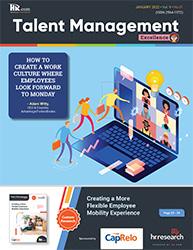
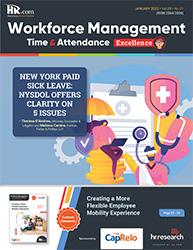




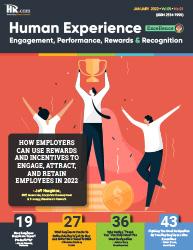



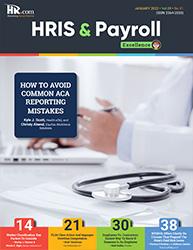

Like to submit an article? Use our online submission form or for more information go to www.hr.com/ExcellencePublications Publications 13 Targeted Publications to Reach Your Audience Informing, Educating, Enlightening and Assisting HR professionals in their personal and professional development, the Excellence series offers high-quality content through the publications!







 - John Tschohl, Founder and President, Service Quality Institute
- John Tschohl, Founder and President, Service Quality Institute


















 Dave ulrich
Julie Winkle Giulioni
Author, Virtual /Live Keynote Presenter, Inc.’s Top 100 Leadership Speakers
Dr. Beverly Kaye CEO, BevKaye&Co.
Dave ulrich
Julie Winkle Giulioni
Author, Virtual /Live Keynote Presenter, Inc.’s Top 100 Leadership Speakers
Dr. Beverly Kaye CEO, BevKaye&Co.


















 By Nina Paczka, Zety
By Nina Paczka, Zety
























